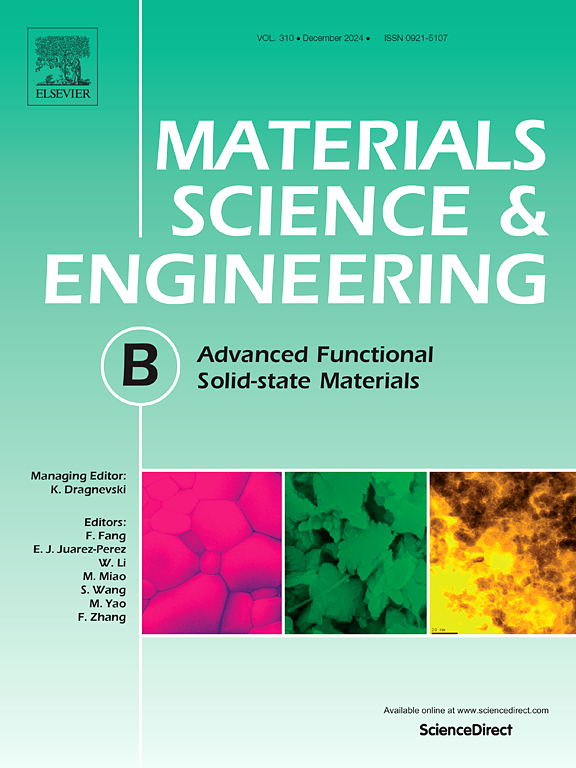构建具有增强伪电容性能的纳米结构 MnCO3,实现超快超级电容器
IF 4.6
3区 材料科学
Q2 MATERIALS SCIENCE, MULTIDISCIPLINARY
引用次数: 0
摘要
MnCO3是一种特殊的超级电容器电极材料,但它面临着循环稳定性不足和导电性差等挑战。在本研究中,通过水热法成功地在泡沫镍上合成了MnCO3立方体阵列。这些超细的立方状MnCO3纳米颗粒形成多孔阵列,对于控制充放电过程中的体积膨胀至关重要。优化后的表面可以增加活性位点,显著提高性能。MnCO3电极表现出显著的赝电容特性,其比电容高达370 F g−1。此外,该电极表现出优异的循环稳定性,即使在5000个连续充放电循环后也没有观察到明显的电容衰减,进一步证实了其在实际应用中的可靠性。此外,组装的对称MnCO3//MnCO3超级电容器器件实现了11 Wh kg−1的能量密度。该研究为赝电容材料的发展提供了有价值的参考。本文章由计算机程序翻译,如有差异,请以英文原文为准。

Construction of nano-architected MnCO3 with enhanced pseudocapacitive performance toward ultrafast supercapacitor
MnCO3 is an exceptional electrode material for supercapacitors, yet it encounters challenges such as inadequate cycle stability and poor conductivity. In this study, MnCO3 cube arrays have been successfully synthesized onto Ni foam via a hydrothermal method. These ultra-fine cube-shaped MnCO3 nanoparticles form porous arrays, essential for controlling volume expansion during charging/discharging. An optimized surface boosts active sites, significantly enhancing performance. The MnCO3 electrode demonstrates remarkable pseudocapacitive characteristics, exhibiting a specific capacitance of up to 370 F g−1. Furthermore, the electrode displays exceptional cycle stability, with no significant capacitance decay observed even after 5000 consecutive charge–discharge cycles, further confirming its reliability for practical applications. Additionally, the assembled symmetric MnCO3//MnCO3 supercapacitor device achieves an energy density of 11 Wh kg−1. This study offers a valuable reference for the development of pseudocapacitive materials.
求助全文
通过发布文献求助,成功后即可免费获取论文全文。
去求助
来源期刊

Materials Science and Engineering: B
工程技术-材料科学:综合
CiteScore
5.60
自引率
2.80%
发文量
481
审稿时长
3.5 months
期刊介绍:
The journal provides an international medium for the publication of theoretical and experimental studies and reviews related to the electronic, electrochemical, ionic, magnetic, optical, and biosensing properties of solid state materials in bulk, thin film and particulate forms. Papers dealing with synthesis, processing, characterization, structure, physical properties and computational aspects of nano-crystalline, crystalline, amorphous and glassy forms of ceramics, semiconductors, layered insertion compounds, low-dimensional compounds and systems, fast-ion conductors, polymers and dielectrics are viewed as suitable for publication. Articles focused on nano-structured aspects of these advanced solid-state materials will also be considered suitable.
 求助内容:
求助内容: 应助结果提醒方式:
应助结果提醒方式:


